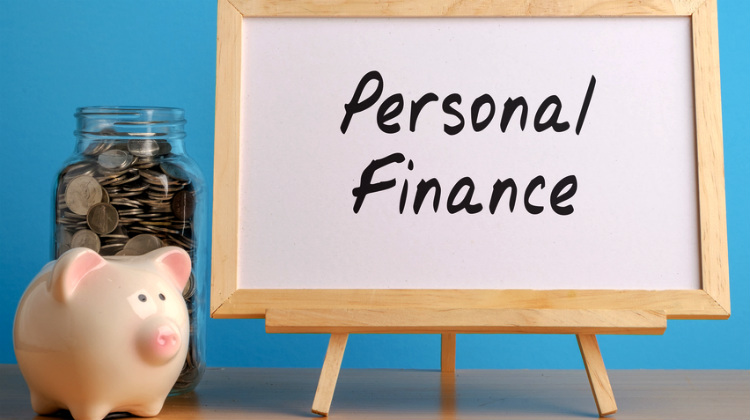Personal finance budgeting entails balancing earnings and expenses against long-term financial goals. Begin by gathering all your financial records—receipts, bank and credit card statements from recent months, etc.—then create your budget plan. Track your spending by categorizing expenses according to needs, wants, and insurance. Use past statements as a baseline estimate of variable expenses such as coffee, dining out, and gifts that vary month to month.
1. Track Your Expenses
One of the easiest and most effective ways to manage spending is to monitor it carefully. Use a notebook or mobile app to keep an account of expenses or simply review bank and credit card statements regularly. Start by tallying up all your income sources—wages, salaries, investments, and any other sources that bring in money.
Next, create a list of expenses and divide them up according to needs or wants. It is crucial that you distinguish these categories so you can prioritize and eliminate unnecessary spending. Make sure that all regular expenses like rent, utilities, and food are accounted for.
2. Set Goals
Establishing clear financial goals makes it easier to stay within your budget, motivates you, and gives a sense of achievement even when progress seems incremental. Determine your savings goals and the percentage of income that will go toward them. Some experts advise setting aside 20%, though the precise amount can depend on your individual goals.
Include an “unusual expenses” category to cover emergency or vacation spending. Also, consider setting up automatic transfers, so a portion of each paycheck automatically transfers to savings or investment accounts.
3. Pay Yourself First
Once you’ve tracked your expenses, an effective way to start saving is using a “pay yourself first” budgeting approach. This method encourages saving by setting up automatic transfers from checking account funds into emergency savings, retirement, or goal-oriented accounts as soon as they appear in them.
This method helps build financial discipline and encourage consistency but may not be practical if you’re living paycheck to paycheck. In that instance, cutting expenses, eliminating debt, and increasing income may be necessary before trying this technique—Thrivent financial advisors can assist with these strategies.
4. Create a Savings Account
Keep track of your spending and budget, but also set aside money for savings and retirement. Start by estimating your take-home income, then adding in all fixed expenses like rent, mortgage payments, cell phone bills, and garbage fees.
Variable expenses should also be factored into your savings plan, such as groceries, restaurants, and subscriptions that may change monthly. Saving these expenses separately will help you reach your goals faster; consider opening a high-yield savings account that offers interest on your funds to maximize returns!
5. Create a Revolving Credit Card Account
Many expenses will recur each month—like rent, utilities, and insurance premiums—but some expenses, such as vacations, car registration fees, or taxes, only arise once annually. To help prepare for such expenses, it’s advisable to create a savings account.
Use a budgeting app, spreadsheet, or NerdWallet’s budget template to monitor your spending and identify areas of overspending that you can cut costs in. Any savings can go toward debt repayment or savings accounts. Review and monitor your plan frequently. As life circumstances shift, your budget should remain flexible enough to adjust while meeting long-term goals.
6. Create a Budget
Budgeting is the cornerstone of financial responsibility. To create one, gather all your financial records, categorize and analyze spending patterns, find an equilibrium between earnings and expenses, and take account of long-term goals.
At first, gather all your income sources—pay stubs, credit card and bank account statements, and auto or student loan bills are excellent places to start. Next, list all expenses, including rent, insurance, and things you may not realize are adding up, like streaming services or coffee.
7. Create a Spending Plan
Establishing and adhering to a spending plan will keep you on the path towards reaching your financial goals. This involves identifying all sources of income (even $5 from sidewalk finds counts!) and devising a spending plan with which you can manage it responsibly. Start by categorizing expenses according to needs vs. wants.
Start by listing all of your regular expenses (rent/mortgage payment, utilities payments, and car payments) as well as variable expenses like groceries, gas, and entertainment. Any excess funds left over each month should be put toward building an emergency fund or paying down debt or saving for your goals.
8. Create an Emergency Fund
An emergency fund, typically consisting of several months’ worth of living expenses, offers a sense of security during unexpected expenses. To create one, start by listing your fixed expenses, such as rent or mortgage payment, utilities bill, and car payments, before adding on variable expenses like groceries, entertainment, and gas expenses.
Prioritize each category and investigate how to cut back, such as dining out less or canceling unneeded subscription services. Finally, prioritize savings for an emergency fund by allocating some money each paycheck into it—preferably using high-yield savings accounts or money market accounts to maximize returns.




